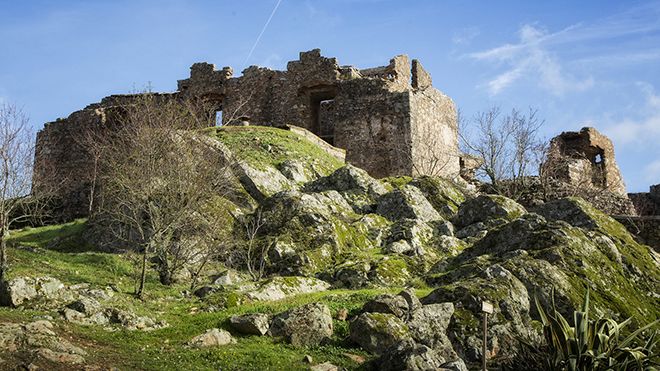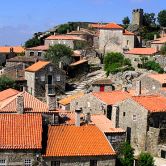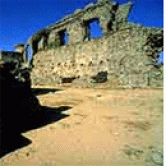Castelo Rodrigo

Towns and Villages
From its lofty hilltop position, the small historical village of Castelo Rodrigo looks down over the plateau stretching eastwards to Spain and northwards to the deep valley of the River Douro. According to tradition, it was founded by Alfonso IX of León, in order to be given to Count Rodrigo Gonzalez de Girón, who repopulated it and gave it its name. With the Treaty of Alcanices, signed in 1297 by D. Dinis, poet and king of Portugal, it came into the possession of the Portuguese crown.
Castelo Rodrigo still preserves scars left by the constant disputes over the territory. The first such episode took place less than a hundred years after its integration into the kingdom of Portugal, during the dynastic crisis of 1383-1385. D. Beatriz, the only daughter of D. Fernando of Portugal, was married to the king of Castile. With her accession to the throne on the death of her father, Portugal was set to lose its independence in favour of Castile. Castelo Rodrigo sided with D. Beatriz, but D. João, the Master of Avis, defeated the Castilians at the Battle of Aljubarrota, in 1385, and as a result was crowned king of Portugal, taking the name of D. João I. As a reprisal for the lords of Castelo Rodrigo having sided with Castile, the new king ordered that the shield and the coat of arms of Portugal should always be displayed upside down on the town´s coat of arms.
Later, in the 16th century, when Philip II of Spain annexed the Portuguese Crown, the Governor Cristóvão de Mora became the defender of the cause of Castile and suffered from the revenge of the local population, who set fire to his enormous palace on 10 December 1640, as soon as they received the news of the Restoration of Portugal (which took place on 1 December). The aftermath of this historic event was the ruins that can still be seen on the top of the hill next to the castle.
In the olden days, it also stood on the route taken by the pilgrims travelling to Santiago de Compostela. Legend has it that none other than St. Francis of Assisi spent the night here on his pilgrimage to the tomb of St. James.
Now a quiet peaceful village, Castelo Rodrigo is worth visiting for its past glories, the beauty and freshness of its location, the houses contained within its walls, its Manueline pillory and also the somewhat touching statue of Santiago Matamouros housed in the igreja do Reclamador.















 Explore
Explore 
 Remember and Share
Remember and Share 


